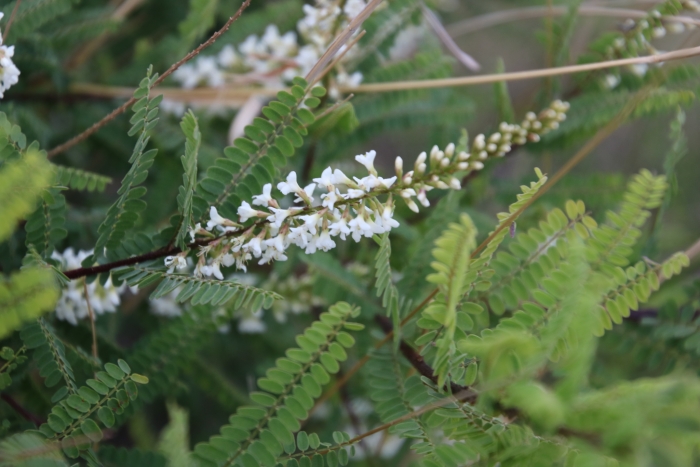Mexican Kidneywood
(Eysenhardtia polystachya)
Mexican Kidneywood (Eysenhardtia polystachya)
/
/

Adri Perea
CC BY 4.0
Image By:
Adri Perea
Recorded By:
Copyright:
CC BY 4.0
Copyright Notice:
Photo by: Adri Perea | License Type: CC BY 4.0 | License URL: http://creativecommons.org/licenses/by/4.0/ | Rights Holder: Adri Perea | Publisher: iNaturalist | Date Created: 2021-07-23T19:57:34-07:00 |





















Estimated Native Range
Summary
Eysenhardtia polystachya, commonly known as Mexican Kidneywood, is a deciduous shrub or small tree native to the semi-arid regions of Central and Southern Mexico. It typically grows to a height of 8-15 feet (2.4-4.6 meters) and a width of 6-8 feet (1.8-2.4 meters). Mexican Kidneywood has a rounded form with compound leaves and produces dense clusters of fragrant white flowers from late spring to early fall, which are highly attractive to bees and butterflies.
This species is valued for its drought tolerance and is often used in xeriscaping. It is also popular for its aromatic flowers and as a nectar source for pollinators. In cultivation, Mexican Kidneywood thrives in full sun and requires low amounts of water once established, making it suitable for water-conservative gardens. It prefers well-drained soils and can tolerate a range of soil types, from sandy to loamy. While it is not commonly afflicted by diseases, it can be susceptible to root rot in poorly drained soils. Mexican Kidneywood is also used in traditional medicine and its wood is valued for tool making due to its hardness.CC BY-SA 4.0
This species is valued for its drought tolerance and is often used in xeriscaping. It is also popular for its aromatic flowers and as a nectar source for pollinators. In cultivation, Mexican Kidneywood thrives in full sun and requires low amounts of water once established, making it suitable for water-conservative gardens. It prefers well-drained soils and can tolerate a range of soil types, from sandy to loamy. While it is not commonly afflicted by diseases, it can be susceptible to root rot in poorly drained soils. Mexican Kidneywood is also used in traditional medicine and its wood is valued for tool making due to its hardness.CC BY-SA 4.0
Plant Description
- Plant Type: Tree
- Height: 8-15 feet
- Width: 6-8 feet
- Growth Rate: Moderate
- Flower Color: White
- Flowering Season: Spring, Summer, Fall
- Leaf Retention: Deciduous
Growth Requirements
- Sun: Full Sun
- Water: Low
- Drainage: Fast
Common Uses
Bee Garden, Drought Tolerant, Low Maintenance
Natural Habitat
native to the semi-arid regions of Central and Southern Mexico
Other Names
Common Names: Kidneywood, Palo Azul, Palo Dulce, Palo Santo
Scientific Names: , Eysenhardtia polystachya, Eysenhardtia amorphoides, Viborquia polystachya, Amerimnon polystachyon, Dalbergia amorphoides, Dalea fruticosa, Eysenhardtia polystachya subsp. polystricta, Psoralea fruticosa, Psoralea stipularis
GBIF Accepted Name: Eysenhardtia polystachya (Ortega) Sarg.